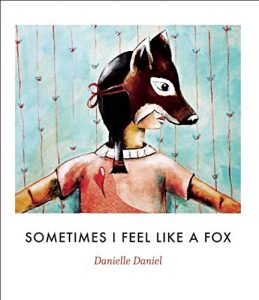A young girl embarks on a journey of discovery alongside her grandmother, Paati, as they explore the significance of bindis—the traditional red dot worn between the brows in Indian culture. Eager to understand the meaning behind the bindi, the girl learns from her grandmother the art of making one. Together, they blend turmeric, sandalwood powder, and ghee in a clay pot until the mixture transforms into a vibrant red hue—a process filled with magic and tradition. As they create bindis of various shapes and sizes, the girl realizes that her bindi represents more than just a dot. It is a symbol of celebration during festivals like Diwali, a source of inner calm and focus during everyday life, and a connection to her cultural heritage.
cultural tradition
Pedro And The Monster Eater / Pedro Y Los Devoradores De Monstruos
Pedro is a young boy from a family of talented artists specializing in papier-mâché sculptures. Growing up surrounded by creativity, Pedro learns the art of crafting piñatas, masks, and mojigangas—giant puppets used in Mexico’s vibrant parades and festivals. As Pedro grows older, he becomes increasingly involved in the family business, honing his skills in papier-mâché sculpture. However, tragedy strikes when Pedro falls ill, plagued by terrifying nightmares of the mojigangas coming to life and chasing him. In his dreams, he is saved by fierce creatures called alebrijes, who devour the monsters. Inspired by his dreams, Pedro begins to recreate the alebrijes using paper and glue, infusing them with vibrant colors and intricate patterns. Soon, his creations attract attention from far and wide, and people flock to buy Pedro’s monster eaters.
Based on the life of artist Pedro Linares, this bilingual picture book weaves together the fascinating origin story of Mexico’s beloved folk art with striking illustrations of the magical creatures Pedro creates. It serves as a captivating introduction to the world of art for young readers and a celebration of creativity, resilience, and the power of imagination. Perfect for parents and teachers seeking to inspire children’s interest in art and cultural traditions.
Lunar New Year (Celebrations & Festivals)
Lunar New Year celebrates the biggest Chinese festival of the year through the eyes of Ling and her family in this authentic narrative non-fiction story. Follow along with Ling, her sister Mei, and granny Po Po as they clean the house, pick fresh flowers and visit friends and family carrying red lanterns through their neighborhood. Readers will learn all about the magic of the Lunar New Year by exploring the preparations leading up to the festival, the Reunion dinner on New Year’s Eve, New Year’s day fireworks, Dragon dancing and the New Year Monster, the lantern festival, and much more! Part of the Celebrations & Festivals series, where readers are invited into a family’s celebration to explore the magic and excitement of religious and cultural festivals from around the world.
Love, Lah Lah
On the vibrant morning of Carnival, Lah Lah eagerly embraces the excitement of the day, bursting with energy as she prepares to immerse herself in the colorful festivities through the streets of Trinidad and Tobago. Accompanied by her beloved papa, they revel in the spectacle of the Carnival parade, cheering enthusiastically as they witness the majestic procession of the King and Queen, adorned in resplendent costumes that dazzle the eye. Join Lah Lah and her papa as they conclude the celebration with a grand performance on stage!
The Best Kind Of Mooncake
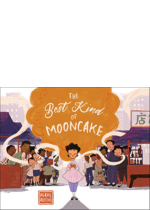
A girl’s ultimate decision has surprising, far-reaching consequences in this mostly true story that reminds us that even the smallest acts of kindness hold the power to change lives, for the giver as much as the receiver.
The Moon Within
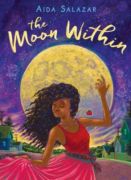
A dazzling story told with the sensitivity, humor, and brilliant verse of debut talent Aida Salazar.
After Life
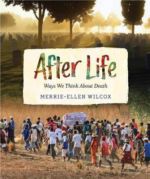
Why do we die? Why can’t we live forever? What happens to us after death? Moving between science and culture, After Life: Ways We Think About Death takes a straightforward look at these and other questions long taboo in our society. By showing the fascinating, diverse ways in which we understand death, both today and throughout our history, the book also shines a light on what it is to be human. Each chapter includes a brief telling of a death legend, myth or history from a different culture or tradition, from Adam and Eve to Wolf and Coyote, and ends with a section on a common theme in our thinking about death, such as rivers and birds in the afterlife, the colors that different cultures use to symbolize death, and, of course, ghosts. The final chapter is about grief, which is both a universal human experience and unique to each person. The text offers suggestions for ways to think about our grief, when to ask for help and how to talk to friends who are grieving.
Sometimes I Feel Like A Fox
Ancient India (Myths of the World)
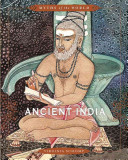
These timeless tales of gods and heroes give us a window into the beliefs, values, and practices of people who lived long ago.
And Now Miguel
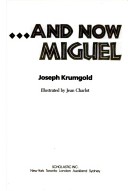
Miguel, the middle child of the Chavez family, lives near Taos, New Mexico, and longs to go with the men of his family to the Sangre de Christo Mountains.

